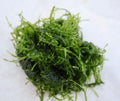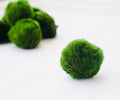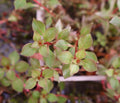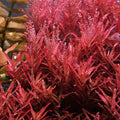Is Nitrate Good or Bad For Your Aquarium?
Numerous articles warning you about the risks of high nitrate and the best techniques for lowering it immediately appear when you search online for information on nitrate in fish tanks. But at what concentration is nitrate deemed hazardous? And if nitrate is so dangerous, why do so many aquarium plant fertilizers—which are intended to be safe for fish, prawns, and snails—increase nitrate levels?
Is Nitrate Beneficial or Harmful to Your Aquarium?
Let's discuss nitrate, which is one of the primary sources of uncertainty in the aquarium hobby.
What Exactly is Nitrate?
In the aquarium, waste from fish and other animals that eat food and excrete feces creates poisonous nitrogen compounds like ammonia. Natural growth and ammonia consumption by helpful bacteria in the fish tank clean the water and make it suitable for fish to dwell in.
However, nitrate is one of the byproducts produced by helpful bacteria. Although nitrate is less poisonous than ammonia, it can nevertheless start to harm animals in large quantities. Read The Easy Guide to the Nitrogen Cycle for Aquariums for further details.
Taking Nitrate Measurements
Since nitrate is both colorless and odorless, it cannot be seen with the naked eye. Fishkeepers often measure nitrate using either water test strips or kits that chemically respond to the presence of nitrate in the water.
In less than one minute, for instance, Aquarium Co-Op Multi-Test Strips can measure nitrate and five other factors. Simply submerge a test strip completely in the aquarium's water, and then gently swirl it around for three seconds.
Once out of the fish tank, keep the test strip horizontal for 60 seconds without shaking off any extra water. After the time is up, compare the results to the color chart to find out how much nitrate is in the water.
What are the nitrate safe levels in aquariums?
Nitrate is much less hazardous to animals than some nitrogen waste substances like ammonia and nitrite, which are toxic to them even in trace concentrations. However, there hasn't been much research into how dangerous nitrate is to the various animals that can be kept in aquariums.
According to a study titled "Nitrate Toxicity to Aquatic Species," nitrate concentrations had to be increased up to about 800 ppm before they became fatal to guppy fry. We advise keeping your fish tanks' nitrate levels below 80–100 ppm.
Many individuals believe that lowering nitrate as much as possible will be better for the health of the animals in their aquariums after seeing this nitrate upper limit. Live aquarium plants must have nitrate to thrive, although fish, snails, and shrimp are unaffected by it.
The plant is forced to take nutrients from its old leaves at the bottom to generate new leaves at the top when nitrate levels fall to 0–20 ppm, which can cause plant leaves to turn yellow or translucent and eventually melt away. Therefore, we try to maintain planted tanks at around 50 ppm nitrate.
How to Reduce Nitrate in High Bioload Tanks
The nitrate level produced by fish waste can naturally rise to 80–100 ppm and above if your fish tank is overcrowded with animals or has few aquarium plants. By performing a partial water change, the quickest and most effective technique to reduce nitrates is to physically remove them from the aquarium. Using an aquarium siphon, remove 30–50% of the old, nitrate-containing water and fill the tank with clean, fresh water.
If your nitrate level is much higher than 100 ppm, you might need to perform repeated water changes over several days to safely lower the nitrate because, generally speaking, we want to avoid scaring the fish by performing large water changes. See our flow chart for water changes for a step-by-step explanation of how to achieve this.
Let's have a look at some methods for preventing nitrate levels from raising in the first place, as most people dislike performing frequent water changes. High bio-load aquariums—those with a lot of fish waste, dead leaves, leftover food, and other rotting organics in the water—often have high nitrate levels. Therefore, reducing the quantity of food or fish in the tank is one of the simplest ways to permanently lower nitrate levels.
Try improving your fish tank or putting in a lot of live plants if you don't want to reduce the number of fish in it. Aquatic plants are our favorites since they naturally eat nitrate to grow more leaves and roots. In general, nitrate can be removed from the environment more quickly by fast-growing plants like water sprite and Pogostemon stellatus than by slow-growing ones like anubias and Java fern.
















